Pregnancy is an incredible journey, but the third trimester can feel like an endurance test as your body undergoes significant changes. You may feel heavier, more fatigued, and perhaps even more limited in your daily movements. However, staying active during this stage can help reduce discomfort, improve circulation, and prepare your body for labor. While you should always consult your healthcare provider before starting any new exercise, here are 10-minute safe pregnancy exercises that can help you feel more comfortable and energized during the final stretch of your pregnancy.
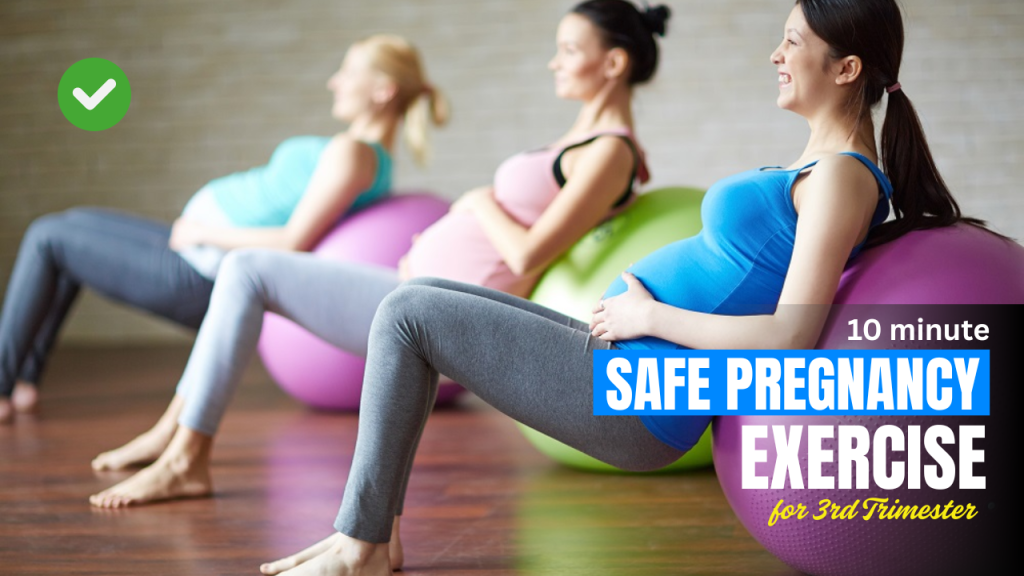
Table of Contents
Perks of 10-Minute Safe Pregnancy Exercises During Your Third Trimester
- Relieves Back and Pelvic Pain
Gentle movements like cat-cow stretches and pelvic tilts ease tension in the lower back and pelvis, where most discomfort accumulates in late pregnancy.- Boosts Energy Levels
Even a short 10-minute session helps increase circulation and oxygen flow, giving you a natural energy boost.- Improves Posture and Balance
Strengthening your core and leg muscles helps support your changing center of gravity and reduces the likelihood of falls.- Reduces Swelling in Legs and Feet
Exercises like calf raises and leg lifts encourage better blood flow and lymphatic drainage, reducing fluid buildup.- Enhances Sleep Quality
Light exercise helps release tension and promotes better sleep, which can be a challenge in the third trimester.- Supports Easier Labor
Strengthening key muscle groups like the hips, thighs, and pelvic floor prepares your body for the physical demands of childbirth.- Promotes Better Digestion
Gentle movement helps keep your digestive system active, reducing issues like constipation and bloating.- Elevates Mood & Reduces Stress
Deep breathing and movement trigger endorphin release, which helps reduce anxiety and uplift your mood.- Improves Flexibility and Mobility
Stretching and low-impact exercises help maintain joint flexibility, easing everyday movements as your belly grows.- Boosts Confidence and Body Awareness
Staying active can help you feel more connected with your body and more in control of your pregnancy journey.
Do’s and Don’ts of Third Trimester Pregnancy Exercises
| Do’s | Don’ts |
|---|---|
| Get doctor’s approval before starting or changing exercises | Don’t start intense workouts if you haven’t been active before pregnancy |
| Listen to your body and rest when needed | Don’t ignore pain, dizziness, or shortness of breath |
| Wear comfortable clothes and supportive footwear | Don’t exercise in very hot or humid environments |
| Stay hydrated before, during, and after workouts | Don’t hold your breath during exercises |
| Focus on low-impact, pregnancy-safe movements | Don’t do high-impact or contact sports |
| Use a stable surface or wall for balance support if needed | Don’t do exercises that require lying flat on your back for long |
| Include gentle stretching and cool-down after each session | Don’t overstretch—your joints are looser due to pregnancy hormones |
| Engage your pelvic floor muscles (Kegels) regularly | Don’t skip warm-ups—they prevent injury |
| Maintain good posture and core support | Don’t perform exercises that strain your belly or compress your bump |
| Keep movements slow, controlled, and safe | Don’t compare your routine to others—every pregnancy is unique |
1. Gentle Cat-Cow Stretches: Relieve Back Pain and Improve Flexibility

Back pain is one of the most common complaints during pregnancy, especially in the third trimester. This simple and effective stretch helps loosen up your spine and relieve tension in your back and neck.
- How to do it: Start on all fours with your wrists directly under your shoulders and knees under your hips.
- As you inhale, arch your back (like a cow), lifting your chest and tailbone towards the sky.
- On the exhale, round your back (like a cat), tucking your chin towards your chest and drawing your belly button towards your spine.
- Repeat for 1-2 minutes.
Do You Know? Many pregnant women experience what’s known as “pregnancy backache” due to the extra weight of the baby. These simple movements can help relieve some of that strain!
2. Pelvic Tilts: Strengthen Your Core and Alleviate Pressure
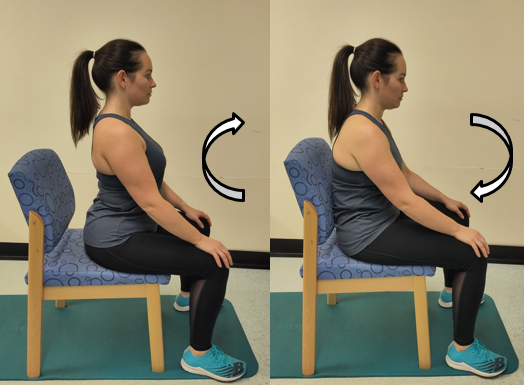
Pelvic tilts help strengthen the muscles around your pelvis and lower back, which can be crucial as your body prepares for labor. These tilts can also alleviate the pressure you might feel on your pelvis and lower back.
- How to do it: Sit on the floor with your knees bent and feet flat.
- Keep your back straight and gently tilt your pelvis forward, then slowly tilt it back.
- You should feel a slight stretch in your lower back as you perform this movement.
- Repeat for 1-2 minutes.
3. Side-Lying Leg Lifts: Tone and Strengthen Your Lower Body
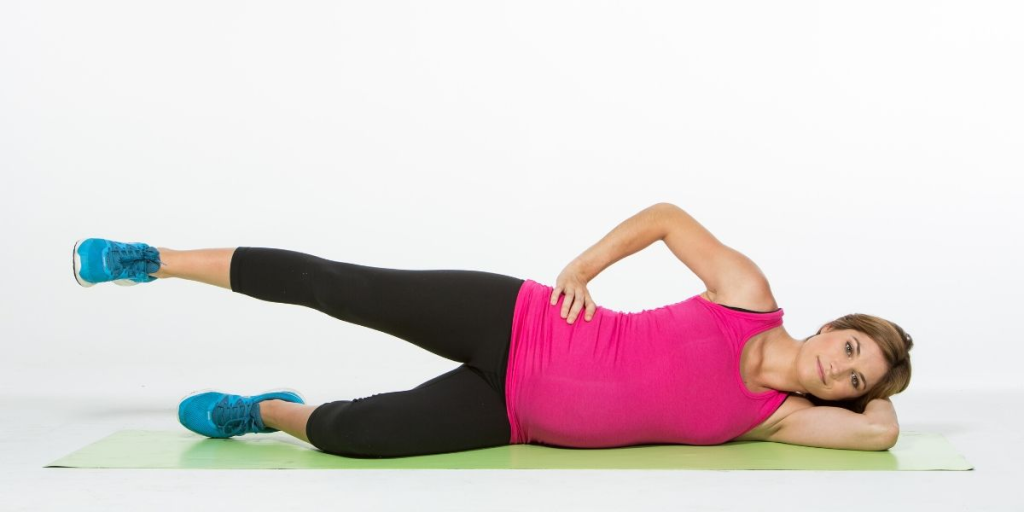
Keeping your legs strong during pregnancy can help with balance and reduce the chances of cramping, which is common in the later stages. Side-lying leg lifts target your glutes, hips, and thighs.
- How to do it: Lie on your left side, supporting your head with a pillow and keeping your legs stacked.
- Slowly lift your right leg about 10–12 inches and then lower it back down.
- Repeat 10-12 times and switch sides. This exercise also helps improve circulation in your legs.
4. Wall Sits: Strengthen Your Thighs and Improve Posture
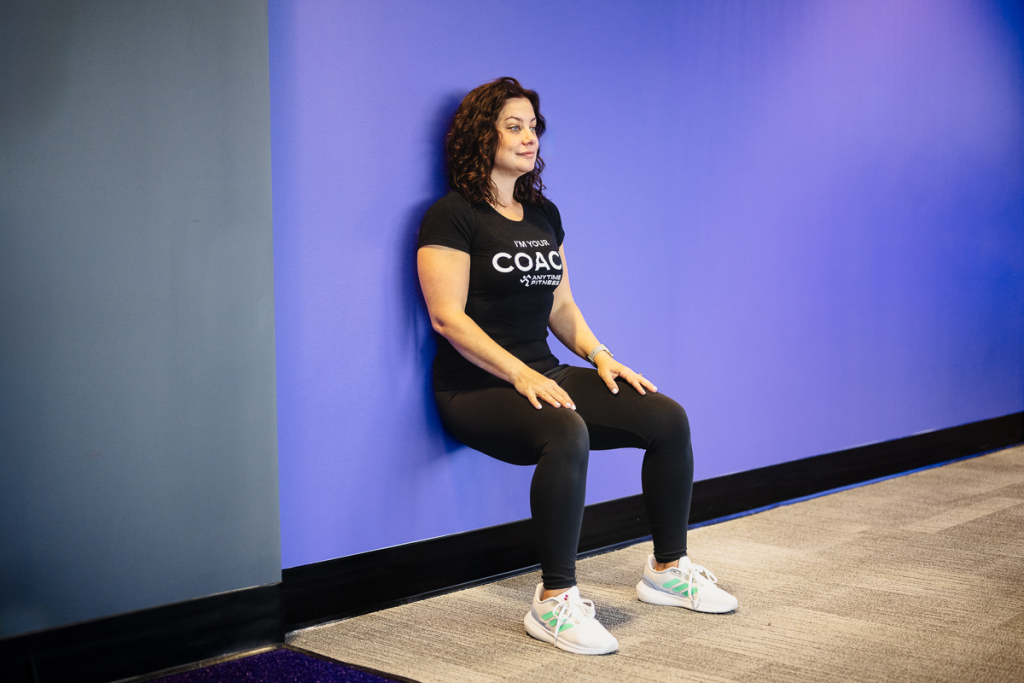
Wall sits are a fantastic exercise to engage your lower body without putting excessive pressure on your joints. They also help improve posture, which can become challenging as your belly grows larger.
- How to do it: Stand with your back against a wall and slowly lower yourself down into a sitting position, making sure your knees are aligned with your ankles and your back is flat against the wall.
- Hold the position for 30 seconds to 1 minute, then rest.
- Repeat for 2-3 sets.
5. Hip Circles: Reduce Pelvic Discomfort and Increase Mobility

Hip circles are a simple way to alleviate pressure on your hips and lower back while promoting better joint mobility. This is especially beneficial as your body adapts to the changing shape during pregnancy.
- How to do it: Stand with your feet about hip-width apart and place your hands on your hips.
- Slowly make large circles with your hips in one direction for 30 seconds, then switch directions.
- Do this for 1-2 minutes.
6. Prenatal Squats: Build Lower Body Strength and Prepare for Labor
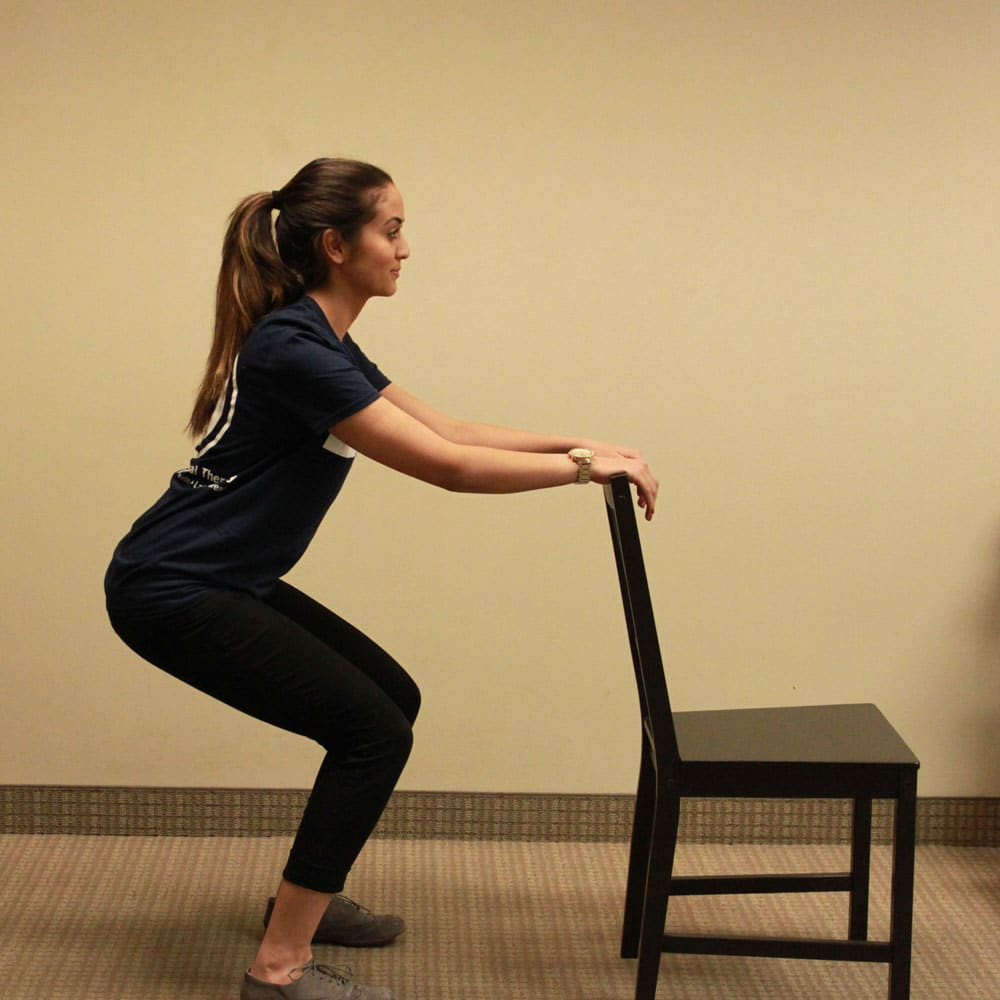
Squats are a great way to strengthen your thighs, hips, and pelvic floor muscles, all of which play a key role in the labor process. Prenatal squats are a safer variation that can be done in the third trimester.
- How to do it: Stand with your feet slightly wider than hip-width apart, keeping your chest lifted and your back straight.
- Slowly lower your hips down and back, as though you are sitting into an imaginary chair.
- Make sure your knees don’t go past your toes.
- Hold for a few seconds and slowly rise back up.
- Repeat 10 times.
Interesting Fact: Squats help open up the pelvis and increase flexibility, which is why they are often recommended in the third trimester to help prepare for childbirth.
7. Seated Forward Bend: Stretch Your Hamstrings and Relieve Tension
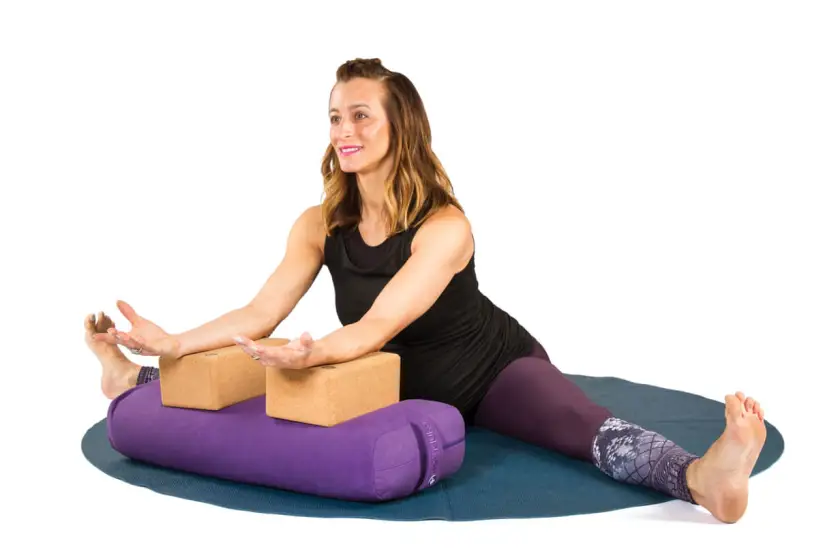
This gentle stretch helps stretch your hamstrings and lower back, alleviating the tension that can build up as your pregnancy progresses.
- How to do it: Sit on the floor with your legs stretched out in front of you.
- Slowly hinge forward from your hips, reaching towards your toes while keeping your back straight.
- Hold for 20-30 seconds, breathing deeply.
- Repeat 2-3 times.
8. Standing Calf Raises: Improve Circulation and Reduce Swelling
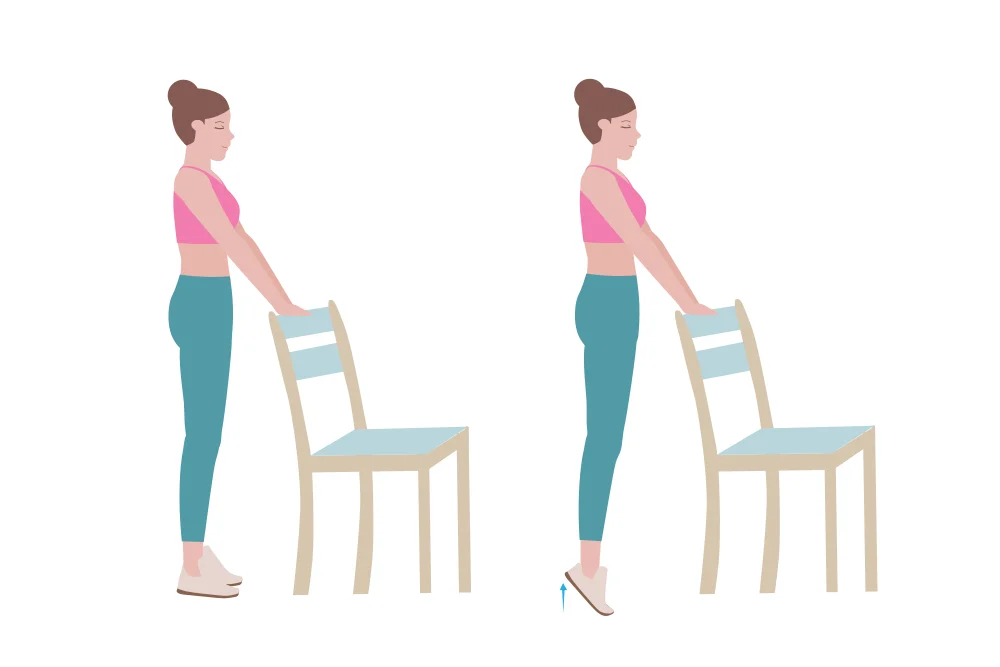
Swelling in your legs and feet is a common issue during pregnancy, especially in the third trimester. Standing calf raises help improve circulation and prevent fluid buildup.
- How to do it: Stand with your feet hip-width apart and slowly rise up onto your toes.
- Lower back down slowly.
- Repeat 15–20 times. You can hold onto a chair or wall for balance.
9. Butterfly Stretch: Open Your Hips and Relax Your Lower Body
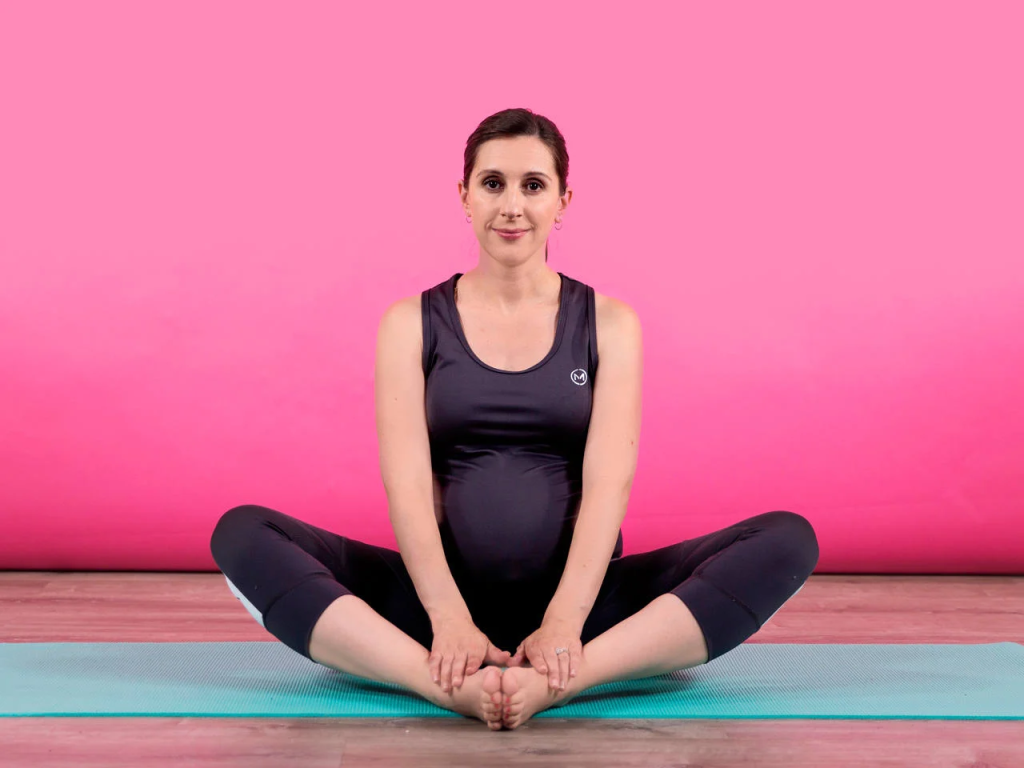
The butterfly stretch targets your hips and groin, areas that may become tight and sore as your baby grows. It can also help with labor preparation by increasing the flexibility of your pelvic region.
- How to do it: Sit on the floor with your feet together and your knees bent out to the sides.
- Gently press your knees toward the floor with your elbows, feeling a stretch in your hips and inner thighs.
- Hold for 30 seconds.
- Repeat 2-3 times.
10. Deep Breathing: Relax and Relieve Stress

Lastly, practicing deep breathing techniques can help reduce stress and tension. This is essential during the third trimester when anxiety about labor may start to increase.
- How to do it: Sit comfortably, close your eyes, and take a deep breath in through your nose, allowing your belly to expand.
- Exhale slowly through your mouth, focusing on releasing any tension.
- Do this for 1-2 minutes.
Myths About Pregnancy Exercises
- Myth: “Exercise during pregnancy is harmful to the baby.”
- Fact: When done correctly and with approval from your healthcare provider, exercise is beneficial for both you and your baby. It can help improve circulation, reduce stress, and prepare your body for labor.
- Myth: “Pregnant women should avoid all abdominal exercises.”
- Fact: While certain abdominal exercises should be avoided, there are safe options that strengthen your core without putting pressure on your baby, such as pelvic tilts and gentle stretches.
Conclusion: Staying Active in Your Third Trimester
Maintaining a gentle exercise routine during your third trimester can have a positive impact on your physical and mental well-being. These 10-minute safe pregnancy exercises are designed to help ease discomfort, strengthen key muscles for labor, and improve overall circulation.
Remember to listen to your body and consult your healthcare provider before starting any new exercise program. A healthy pregnancy is a happy pregnancy!
Frequently Asked Questions (FAQs)
Is it safe to exercise during the third trimester of pregnancy?
Yes, exercising during the third trimester is generally safe for most women as long as the pregnancy is healthy and low-risk. Always consult with your doctor or midwife before beginning any new exercise routine.
How often should I do pregnancy exercises in the third trimester?
Aim for about 20–30 minutes of light to moderate activity most days of the week. If you’re doing a short 10-minute routine, you can repeat it 2–3 times throughout the day or mix different exercises.
Can exercising help with labor and delivery?
Absolutely. Staying active can improve endurance, strengthen key muscles, and help with pelvic alignment, all of which can ease the labor and delivery process.
Do I need to warm up before a 10-minute routine?
Yes, even a short session should begin with a gentle warm-up, like shoulder rolls or light marching in place, to prepare your body and prevent injury.
Can I do these exercises even if I haven’t been active before pregnancy?
Yes, these low-impact exercises are safe for most beginners. Just start slow, listen to your body, and rest when needed.
Will these exercises help reduce swelling in my legs and feet?
Yes. Moves like calf raises, hip circles, and walking help improve circulation and can minimize swelling (edema), which is common in the third trimester.
Can I continue doing prenatal yoga or Pilates during the third trimester?
Yes, as long as the routines are prenatal-safe and guided by a qualified instructor who is aware of your pregnancy stage. Always avoid positions that compress your belly or involve deep twisting.






Very good
Very good
Awesome